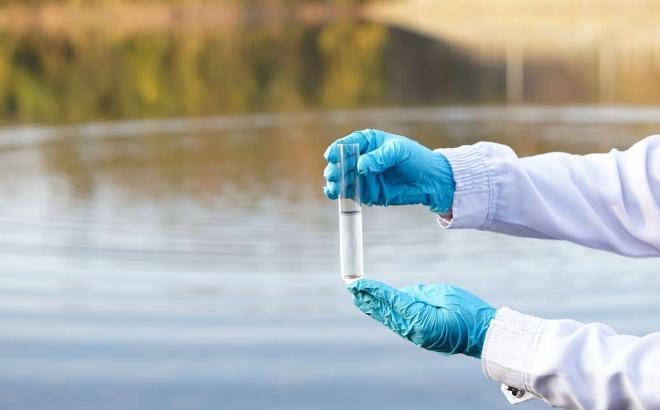Nature Microbiology: On the trail of the "primordial bacteria
Archaea colonise extreme habitats, including the digestive tract of vertebrates. The different strains are specific to the host, researchers with the participation of the ICC Water & Health (KL, TU, MUW) have now shown.

Archaea are single-celled organisms that have existed for billions of years and are at the beginning of evolutionary history. Nevertheless, it is only now, in the 21st century, that scientists are discovering more and more new strains - namely those that live in the digestive tract of humans and other vertebrates. An overview of the species-specific colonisation with archaea is provided by a recently published study on which researchers from the ICC and the Max Planck Institute for Developmental Biology collaborated. The work was published in Nature Microbiology on 26 October 2021.
Drinking water research and microbiologyGeorg Reischer is a molecular biologist and works at the Research Centre Water and Health at TU Wien and the ICC Water & Health. There he is concerned with the question of how pollution in water can be measured and assigned to a polluter. Pollution is sometimes caused by human sewage, but also by farm animals or wild animals. "If we detect faecal pollution, we have to find the cause. We can do this, for example, using microorganisms that specifically occur in the digestive tract of a certain species," explains Georg Reischer. This procedure is called microbial source tracking.
Since it is often not so easy to assign a causative agent, the scientists have set out to find new, specific markers. The cooperation between the Vienna University of Technology and the Max Planck Institute for Developmental Biology began several years ago. A central hypothesis of their work is that there are archaea living in the digestive tract that are firmly associated with their host - and are thus suitable for causative identification.
A comprehensive data set emergesStudies dealing with the occurrence of archaea in the digestive tract usually use samples derived from humans or farm animals as well as primers that are non-specific for different archaea. This severely limits the amount of knowledge that can be gained. "In contrast, three quarters of the samples we studied, which were collected with the support of Gabrielle Stalder from the University of Veterinary Medicine Vienna, come from wild animals of various taxa, i.e. mammals, birds, reptiles, amphibians and fish," says Reischer. "This is unique and provides us with a comprehensive picture." Already in the 2019 study published in Nature Communications, the researchers used this dataset to study the bacterial microbiome of different species.What the research team has now found? Previously undiscovered archaea live in vertebrates, which have now been classified for the first time and can apparently be associated with individual animal species. The fact that archaea can be clearly assigned to an animal species or group of animals has two reasons: Diet and degree of relatedness. "The more closely two species are related, the more similar their microbiome is - including archaea," explains Andreas Farnleitner, who conducts research at the Vienna University of Technology and Karl Landstein University Krems.
Shortened search for traces"A special discovery is the archaeon Methanothermobacter," says Nicholas Youngblut from the Max Planck Institute for Developmental Biology, who decoded the gene segments of the archaea. Methanothermobacter is found in large numbers in birds - and in high concentrations. One explanation for why this is so could be the adaptability of the archaea: The unicellular organisms occur mainly in niches and are highly adapted. Some species prefer high temperatures, others live in very acidic environments or concentrated salt solutions. "Compared to other vertebrate classes, birds have a particularly high body temperature of up to 42 degrees Celsius. This seems to be an advantage for this archaeon," says Georg Reischer. Findings like these can be used in the future for causative identification, because host-associated archaea are far more specific than conventional markers.
The Inter-University Cooperation Centre Water and Health (ICC Water & Health) sees itself as a scientific platform and competent partner in questions of water quality and its impact on human health. The platform was founded by the Vienna University of Technology and the Medical University of Vienna in 2010 and was able to establish itself sustainably thanks to competitive research funding from the Federal Ministry of Science, Research and Economy (BMWFW). In 2017, the ICC Water & Health was expanded to include the Karl Landsteiner University of Health Sciences (KL). KL is now an official part of the research platform.
to Publication



